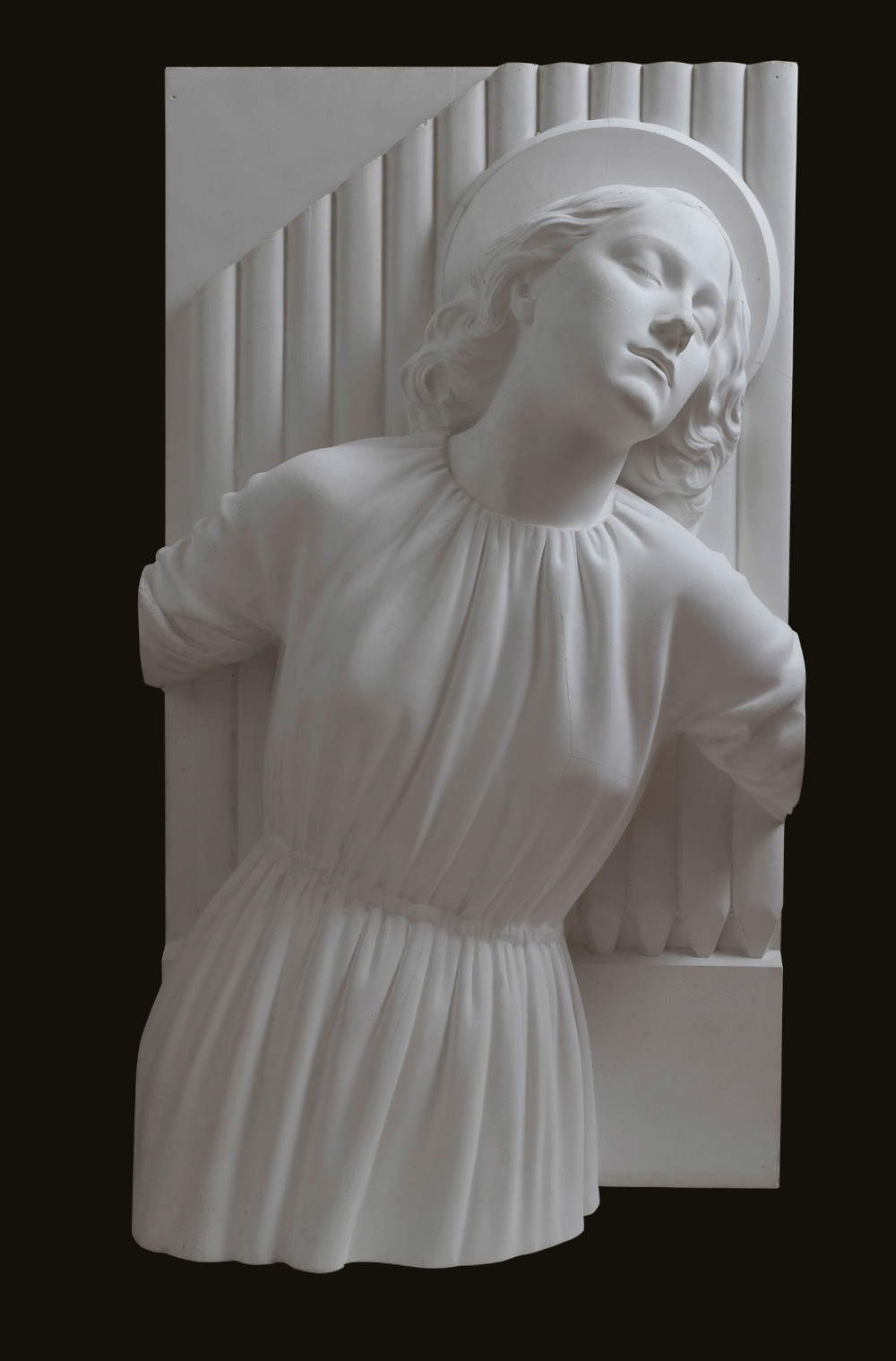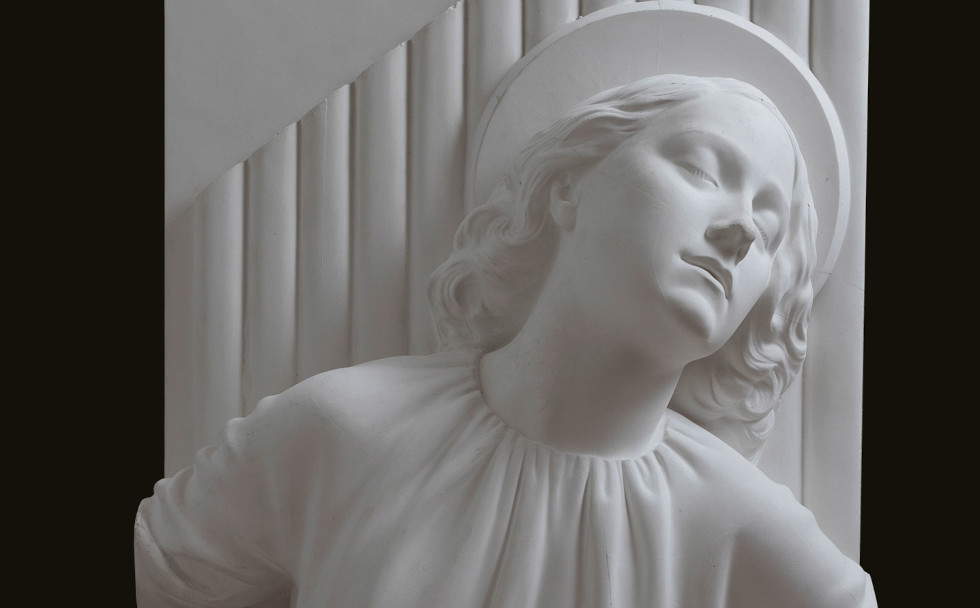Ferrara's Castello Estense hosts the first retrospective on Arrigo Minerbi, D'Annunzio's favorite sculptor
The first retrospective exhibition dedicated to Gabriele D’Annunzio’s favorite sculptor, Arrigo Minerbi (Ferrara, 1881 - Padua, 1960), will be held at the Castello Estense in Ferrara from July 8 to December 26, 2023. The Ferrara sculptor, capable of making himself the interpreter of Art Nouveau trends and 20th-century classicism, experienced great notoriety in the 1920s and 1930s, so much so as to be counted by critics among the greatest of our time, “for height of inspiration, creative power and technical skill.” In the second half of the twentieth century, however, the idealized, anti-modern classicism of his mature production lost interest, and his fortunes eclipsed into obscurity.
Organized by the Ferrara Arte Foundation and the Art Museum Service of the Municipality of Ferrara and curated by Chiara Vorrasi from an idea by Vittorio Sgarbi, the exhibition Arrigo Minerbi: the “ideal real” between liberty and classicism traces for the first time the entire span of Minerbi’s production, relocating it in the Italian artistic context of the early 20th century. His production testifies to an original temperament but perfectly rooted in the artistic debate that accompanied the transition from modernism with Symbolist declinations at the beginning of the century to the return to tradition that matured after World War I, to the monumental classicism dominant in the 1930s.
On display is a rich selection of sculptures, juxtaposed with pictorial and plastic works by Italian masters between Symbolism, magic realism and classicism (including Gaetano Previati, Leonardo Bistolfi, Adolfo Wildt, Galileo Chini, Ercole Drei, Felice Casorati, Ubaldo Oppi, Mario Sironi, Antonio Maraini, Achille Funi). Thanks to loans from important museums and private collections, the exhibition brings together in the Castello Estense about eighty pictorial and sculptural works of even monumental format. The presence of works in plaster, marble, stone, bronze and terracotta, and the comparison of sketches, models, finished works and casts gives the public an opportunity to approach the author’s modus operandi and virtuosic treatment of materials capable of making himself an interpreter of the linear synthesis of the secessions, or emulating the formal clarity of the Renaissance masters with an original purist naturalism.
The research conducted in preparation for this exhibition has made it possible to ascertain direct contacts or tangencies with some of the major protagonists of the art and culture of his time. To highlight this aspect, the exhibition is developed in thematic sections that reread some of the themes of the early 20th century artistic season: the decorative arts, the hero myth, the ancient model, public art, the portrait between spontaneity and idealization, and the renewal of the iconography of the sacred. Among the objectives of the exhibition project is the enhancement of the heritage of Ferrara’s Gallerie d’Arte Moderna e Contemporanea: the exhibition allows the public to admire a selection of the vast collection of Minerbi’s works held in the museum’s civic collections, some of which have never been seen before, formed through the artist’s donation in 1953 and other bequests, and which has been the focus of an extensive study and restoration campaign thanks to the patronage of the Emilia-Romagna Region.
The exhibition is intended as an opportunity to rediscover Minerbiani’s interventions scattered around the city of Ferrara, including public works such as the Victory of the Piave in the Victory Tower (1924) and the allegorical group The Po and its tributaries in the fountain of theAqueduct (1932), or the fascinating evidence of production linked to private commissions, from Villa Melchiorri in Viale Cavour (1904), to the funeral monument of Pico Cavalieri at the Jewish Cemetery (1923), which has just been restored by the Municipality of Ferrara in collaboration with the Ministry of Culture-Direction General of Archaeology Fine Arts and Landscape and the Jewish Community.
The exhibition has the patronage of the Emilia-Romagna Region and the MEIS-National Museum of Italian Judaism and the Shoah.
For info www.castelloestense.it
Hours: 10 a.m. to 6 p.m., closed Tuesdays (ticket office closes 45 minutes before).

 |
| Ferrara's Castello Estense hosts the first retrospective on Arrigo Minerbi, D'Annunzio's favorite sculptor |
Warning: the translation into English of the original Italian article was created using automatic tools. We undertake to review all articles, but we do not guarantee the total absence of inaccuracies in the translation due to the program. You can find the original by clicking on the ITA button. If you find any mistake,please contact us.





























